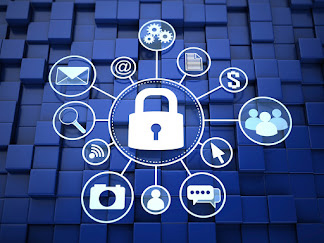SAFE ON THE INTERNET: 5 VALUABLE TIPS
The Internet can be scary to the inexperienced user - and to a certain extent, it is. According to the IT security analysts at AV-TEST, four new applications are created every second that are considered malicious software.
Terrifying numbers, aren't they? Fortunately, however, you don't need to be a computer expert to browse the internet safely. With a little preparation and the right tools, even tech-shy users can safely enjoy the benefits of the Internet.At the start of Cyber
Security Month, we rounded up the 10 best tips to help you stay safe
while surfing the Internet
1. Create Strong Passwords
Fact: In the past year, 4 percent of all users used
"123456" as a password. This makes it the most common - i.e. worst -
password in 2016.
Strong passwords are the simplest and most effective measure
to defend against brute force attacks (criminals use automated tools to
systematically test all possible combinations of username and password at
account access points). The more secure the password, the harder it is for the
attacker to infect your system with malware or steal sensitive data such as
credit card information.
The majority of us most likely have tons of accounts and
passwords. It is tempting to use easily memorable passwords for the sake of
simplicity. Don't give in to this temptation. Better to use a password manager.
Well-known products are, for example, LastPass, Dashlane, and Sticky Password.
With these intuitive programs, you can save all your passwords securely without
having to memorize lengthy strings.
Insider info: If your budget is not big, try the free KeePass.
The experts are big fans of the open-source password manager, which is updated
regularly.
Here are
some tips on how to create a strong password:
· Long: Your password
should be at least twelve characters long.
· Complex: Use a
combination of numbers, special characters, and upper and lower case letters.
·Random: do not use words
found in the dictionary.
·Unique: never use the same
password for different accesses.
Further reading: You can
find our complete guide to the secure creation and management of passwords
here.
2. Keep
Software up To Date
Fact: 50 percent of users install security updates for software
after 45 days or even later.
Keeping software safe is a constant battle for developers. As
soon as security gaps appear and vulnerabilities are exploited, they have to
develop patches as quickly as possible to update their software and better
protect users. If users then wait a long time with the updates, their device is
also more susceptible to attacks.
In order to reduce the security risk, you must always keep
your operating system, browser, anti-virus program, and other software up to
date. It is best to activate automatic updates in your software settings. Then
you no longer have to deal with it yourself.
3. Use
Reputable Antivirus Software
Fact: Over 600 million malware programs are targeting Windows
users.
Antivirus
software also plays a key role in keeping you safe on the Internet. A
high-performance and reputable IT security solution can prevent harmful
software from reaching your computer. It can also eliminate problems that your
computer's defenses may have previously slipped. Remember to turn on automatic
updates. Also, make sure that the settings of your antivirus solution match
your computer usage and your surfing behavior. Here you will get, for example,
a 30-day trial version of Malware.
4. Be
Careful with E-Mail
Fact: 30 percent of all phishing emails are opened.
Email is one of the most common ways to spread malware. For
example, hackers create serious-looking messages that contain tempting special
offers or that appear to come from an official agency (bank, tax office,
school, etc.). However, you can also receive emails from friends or colleagues
whose computers are already infected. Most of the time, the messages contain a
link and/or attachments that, when clicked, will download the malware or
redirect you to a website to steal your data.
So always proceed with caution when reading your emails. Be
skeptical of unusual offers. Always double-check the URL or file extension
before opening any link or attachment. Be extremely careful about which
websites you enter information on. Remember, if an email sounds too good to be
true, it most likely is too.
5. Don't
Forget Your Mobile Devices
Fact: The number of malware detected on Android devices
doubled to over 4 million between 2015 and 2016 alone.
Around 50 percent of the world's population uses a smartphone
these days. So it's not surprising that hackers are increasingly targeting
mobile devices. Android devices are the most vulnerable. Malware for iOS,
Windows Mobile, and other operating systems have proven less successful. If you
are using an Android device, the best way to protect yourself is to get used to
the same surfing behavior here as on the computer. Mobile anti-malware
solutions such as Emsisoft Mobile Security offer additional protection.




Comments
Post a Comment